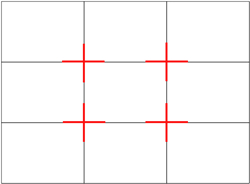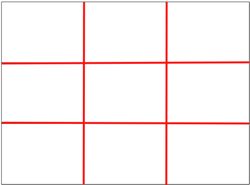CAMERA SHOT
TYPES TERMS FOR TEST:
Six shots in Videographer’s Repertoire -
Long
shot, bust shot/head & shoulders shot, extreme close-up, medium shot,
close-up, over-the-shoulder
Long shot – Also known as an
establishing shot or wide shot it sets up the location of a video or film.
Bust shot/head & shoulder shot – Camera shot of an
actor/actress from waist up
Close up shot – The shot is tightly
framed on the subject so they dominate most of the frame and we can’t really
see what is going on in the background.
Extreme close up – Shows small details
of a subject that would not be noticed in a wider shot. It could be an extreme close up of an eye
crying or a wrinkled hand…
Medium shot – Shows most of the
subject’s body either from the waist up or the knees up.
Over-the-shoulder shot – Gives the
character’s point of view, but includes character’s shoulder or part of their
head. Commonly used when two characters
are having a discussion.
High Angle Shot - is a cinematic technique where the camera looks down on the
subject from a high angle and can
make the subject seem vulnerable or small or submissive when applied with the
correct mood, setting, and effects.
Low Angle
Shot - a shot from
a camera positioned low on the vertical
axis, anywhere below the eye line, looking up. Sometimes, the low-angle shot can make
the subject look strong and powerful.
Rule of
Thirds - The basic principle behind
the rule of thirds is to imagine breaking an image down into thirds (both
horizontally and vertically) so that you have 9 parts. As follows.
As you’re taking an image you would have done
this in your mind through your viewfinder or in the LCD display that you use to
frame your shot.
With this grid in mind the ‘rule of thirds’
now identifies four important parts of the image that you should consider
placing points of interest in as you frame your image.
Not only this – but it also gives you four
‘lines’ that are also useful positions for elements in your photo.
The theory is that if you place points of
interest in the intersections or along the lines that your photo becomes more
balanced and will enable a viewer of the image to interact with it more
naturally.
180 Degree Rule - is a cinematography guideline that
states that two characters in a scene should maintain the same left/right
relationship to one another . When the camera passes over the invisible axis
connecting the two subjects, it is called crossing the line and the shot
becomes what is called a reverse angle


